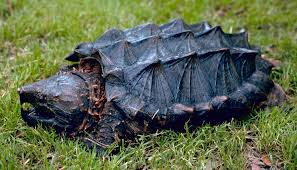
Baby Alligator Snapping Turtle Care: A Comprehensive Guide
Introduction
Alligator snapping turtles (Macrochelys temminckii) are fascinating and ancient creatures that have roamed the Earth for millions of years. Their distinctive appearance, with their massive heads, powerful jaws, and long tails, makes them a captivating species to observe and care for. However, baby alligator snapping turtles require specialized care to ensure their health and well-being. This comprehensive guide will provide detailed instructions on how to properly care for baby alligator snapping turtles, from housing and feeding to health maintenance and handling.
Housing
Enclosure:
- Baby alligator snapping turtles should be housed in a secure enclosure that provides ample space for movement and swimming.
- The enclosure should be at least 20 gallons in size for a single turtle and larger for multiple turtles.
- The enclosure should have a secure lid to prevent escape and predators.
Substrate:
- The substrate should be a soft, sandy material that allows the turtle to burrow and hide.
- Sand, cypress mulch, or a mixture of the two is recommended.
- Avoid using gravel or pebbles, as they can be ingested and cause health problems.
Water:
- Alligator snapping turtles are semi-aquatic and require access to clean, fresh water at all times.
- The water should be deep enough for the turtle to fully submerge its body.
- A submersible filter is essential to maintain water quality.
Basking Area:
- Baby alligator snapping turtles need a basking area where they can dry off and warm up.
- The basking area should be elevated above the water level and provide a temperature gradient of 85-95°F (29-35°C).
- A heat lamp or basking bulb can be used to create the desired temperature.
Feeding
Diet:
- Baby alligator snapping turtles are carnivorous and their diet should consist primarily of live prey.
- Suitable prey items include crickets, mealworms, waxworms, and small fish.
- As they grow, they can be introduced to larger prey such as frogs, mice, and snails.
Feeding Frequency:
- Baby alligator snapping turtles should be fed daily.
- The amount of food should be based on the size of the turtle and its appetite.
- Avoid overfeeding, as this can lead to obesity and health problems.
Supplements:
- Calcium supplements are essential for proper shell development.
- A calcium block or powder can be added to the water or sprinkled on the food.
- Vitamin D3 supplements may also be necessary, especially if the turtle does not have access to natural sunlight.
Health Maintenance
Regular Checkups:
- Regular veterinary checkups are crucial for ensuring the health of baby alligator snapping turtles.
- A veterinarian can examine the turtle for any health issues, provide vaccinations, and offer advice on proper care.
Shell Care:
- The turtle’s shell should be inspected regularly for any signs of damage or infection.
- If any abnormalities are noticed, consult a veterinarian immediately.
Water Quality:
- The water in the enclosure should be tested regularly for pH, ammonia, nitrite, and nitrate levels.
- Water changes should be performed as needed to maintain optimal water quality.
Handling
Safety Precautions:
- Alligator snapping turtles have powerful jaws and can inflict serious bites.
- Always handle the turtle with care and wear gloves if necessary.
- Never lift the turtle by its tail, as this can cause injury.
Proper Technique:
- To pick up a baby alligator snapping turtle, gently grasp the back of its shell with one hand and support its body with the other.
- Hold the turtle securely but avoid squeezing it too tightly.
- If the turtle resists, do not force it.
Conclusion
Caring for baby alligator snapping turtles requires dedication, patience, and a commitment to providing them with the best possible environment. By following the guidelines outlined in this comprehensive guide, you can ensure that your baby alligator snapping turtle thrives and reaches its full potential. Remember to seek professional veterinary advice whenever necessary and enjoy the unique experience of raising these fascinating creatures.
